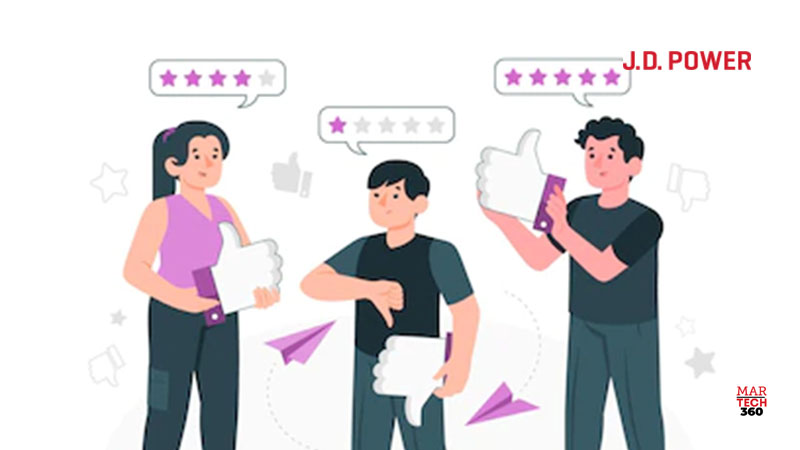U.S. Retail Banks Struggle to Differentiate, Deliver Meaningful Customer Experience as Economy Sours, J.D. Power Finds
Mass Shift to Digital Creates Challenges for Brands Looking to Drive Superior Customer Engagement
The twin forces of digital transformation and rising inflation have created a new set of customer engagement challenges for the nation’s retail banks. According to the J.D. Power 2022 U.S. Retail Banking Satisfaction Study, released, most banks are missing the mark when it comes to making their customers feel supported as increasing numbers of U.S. consumers indicate an increase in their financial stress. Moreover, banks have struggled to deliver on customer expectations for personalization as nearly half of customers have now moved to primarily digital-centric banking relationships.
“A customer’s definition of what support from their retail bank looks like is changing rapidly as we enter a new economic cycle and move further along the digital adoption curve”
“A customer’s definition of what support from their retail bank looks like is changing rapidly as we enter a new economic cycle and move further along the digital adoption curve,” said Jennifer White, senior consultant of banking intelligence at J.D. Power. “It’s no longer predominately about being fast, efficient or convenient. The preeminent performance metric with the biggest influence on customer satisfaction is ‘supporting customer during challenging times,’ and that means customers are expecting a personalized mix of financial advice, hands-on help with problem resolution and guidance on how to grow their money.”
Also Read: Simulmedia Launches TV+, the Only Truly Cross-Channel TV Advertising Platform
Following are some key findings of the 2022 study:
- Bank customers seek support in tough economic times: Overall customer satisfaction with retail banks rises 155 points (on a 1,000-point scale) when customers cite that their bank supports them during challenging economic times. Similarly, 63% of customers say they definitely will not switch banks and 78% say they definitely will reuse their bank when it delivers this support. However, despite its huge effect on customer satisfaction, only 44% of banks are delivering on this metric.
- Customers least satisfied with their bank’s ability to help save time or money: While banks perform particularly well on traditional customer engagement metrics such as people, digital channels and overall trust, satisfaction scores are lowest for helping retail bank customers save time or money, which has become a key priority for them.
- Efforts to reduce fees go largely unnoticed: Although customers who pay bank fees (e.g., overdraft or low balance fees) are three times more likely to consider switching banks, only 61% either do not know or are unsure whether their bank has made any changes to their overdraft fee policy. Notably, many big banks have introduced fee relief plans this year.
- Alerts and fee avoidance advice are important personalization tools: When asked how they would like their bank to personalize their banking experience, 46% of customers say they want help in avoiding fees and 37% say they want to receive account alerts.
The study measures customer satisfaction with banks in 15 geographic regions. Highest-ranking banks and scores, by region, are as follows:
California: U.S. Bank (669)
Florida: Regions Bank (697)
Illinois: Wintrust Community Bank (733)
Lower Midwest Region: Central Bank of the Midwest (685)
Mid-Atlantic Region: PNC (684)
New England Region: Bangor Savings Bank (722) and Rockland Trust (722) in a tie
North Central Region: City National Bank (WV) (706)
Northwest Region: Banner Bank (685)
New York Tri-State Region: New York Community Bank (690)
Pennsylvania: S&T Bank (675)
South Central Region: Hancock Whitney Bank (694)
Southeast Region: United Community Bank (730)
Southwest Region: FirstBank (680)
Texas: Frost (755)
Upper Midwest: Chase (661)
The U.S. Retail Banking Satisfaction Study, now in its 17th year, was redesigned for 2022. It measures satisfaction across seven factors (in order of importance): trust; people; account offerings; allowing customers to bank how and when they want; saving time and money; digital channels; and resolving problems or complaints.
The study is based on responses from 101,587 retail banking customers of the largest banks in the United States regarding their experiences with their retail bank. It was fielded from April 2021 through January 2022. National banks are defined as banks with more than $300 billion in domestic deposits; regional banks are those with $65 billion-$299 billion in domestic deposits; and midsize banks are those with 50-100 branches nationally and at least 20 branches within a respective region.


Comments are closed.